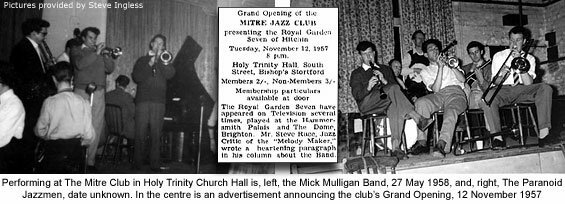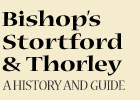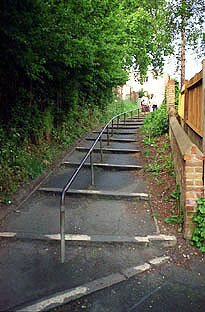
| UPDATES | GUEST BOOK | MEMORIES | MORE PICTURES | OTHER LINKS | BIBLIOGRAPHY | ||

Lower South Street (West)
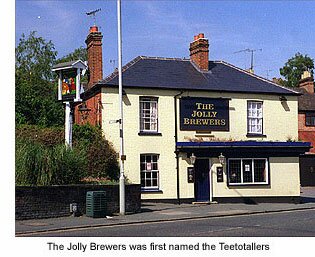
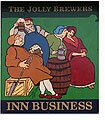 Adjacent to King’s Cottages is Bowling Close and Bridgeford House, all standing on land that was previously the site of a large timber yard. Nursery Road takes its name from the fact that a garden nursery once occupied most of this hillside.
Adjacent to King’s Cottages is Bowling Close and Bridgeford House, all standing on land that was previously the site of a large timber yard. Nursery Road takes its name from the fact that a garden nursery once occupied most of this hillside.
The Jolly Brewers public house at the corner of Nursery Road was opened in 1867 and first went by the rather unusual name of The Teetotallers. The landlord at that time was Henry Phipp, no doubt a relative of John Phipp who took out a licence to hold the first Baptist meeting in Stortford, and Thomas Phipp snr who operated a brewery in South Street. Whether or not the Teetotallers sign was misinterpreted and affected trade isn’t known, but in 1870 it was taken down and the pub renamed the Jolly Brewers. Its original stable block once stood to the right of the building and immediately behind it, almost unseen, is a small row of Victorian cottages called South Terrace.
In the 16th century the Wrestlers public house stood in this vicinity, but exactly where is unknown. Destined to be demolished in the not too distant future are the petrol station and three 19th century buildings with rendered and painted exteriors. Two have been boarded-up and empty for many years, while the largest of these (No 114), currently a shop, gives every indication of once being a public house. The site will be redeveloped for housing.
|
Holy Trinity Church |
|||||||
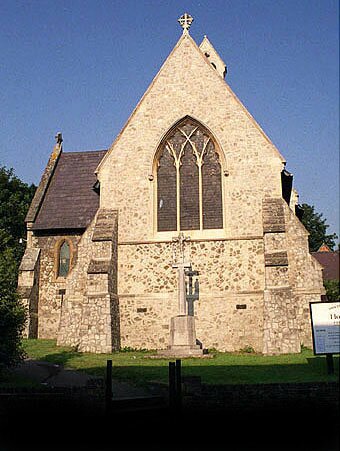 |
|
||||||
|
Holy Trinity Church Hall
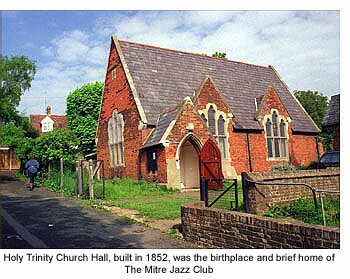 New Path also leads to Holy Trinity Church Hall, built behind the church in 1852 for use as an Infants school by New Town residents. In the early part of last century, land to the north of the church was purchased with a legacy of Mr Goodwin Barnes, but subsequently sold in order to purchase the school that was later used by New Towners as a Parish Hall.
New Path also leads to Holy Trinity Church Hall, built behind the church in 1852 for use as an Infants school by New Town residents. In the early part of last century, land to the north of the church was purchased with a legacy of Mr Goodwin Barnes, but subsequently sold in order to purchase the school that was later used by New Towners as a Parish Hall.
Hard to believe now, but in the 1950s this unlikely building played an important role in the development of Bishop’s Stortford’s live music scene, that was to continue in the town right through the 1960s.
Traditional/revivalist jazz was blossoming in the 1950s and three young local men, with an enthusiasm for this type of music, set about forming a jazz club that would act as a showcase for local bands. It became known as the Mitre Jazz Club, a title inspired by the name of the town itself and, more especially, the Mitre associated with bishops. Opening on 12 November 1957, the first musicians booked to entertain the hundred or so people crowded into the hall were a band from Hitchin in Hertfordshire called The Royal Garden Seven.
The weekly event proved so popular that a larger venue was soon required and on 7 January 1958 the club moved to Long’s Ballroom in North Street – a premises capable of holding up to 500 people (See Guide 6). The Mitre Club’s most prestigious events were held at Long’s for the next five years, though smaller events did continue at Holy Trinity Hall for a while. The hall is currently home to a pre-school day nursery.
